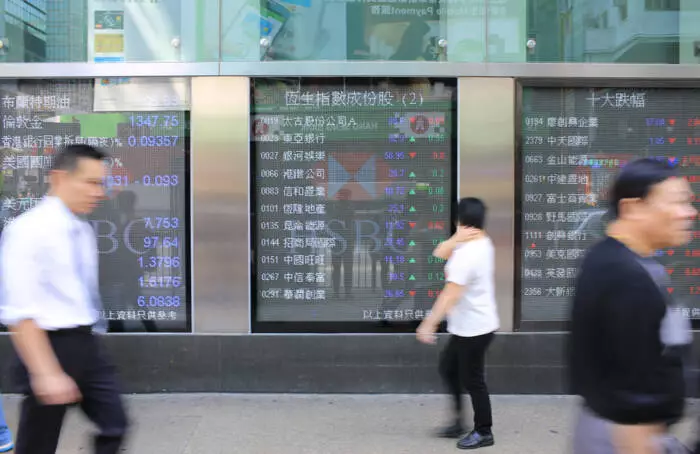The financial markets have experienced notable shifts in recent weeks, with the Hang Seng Index making headlines by continuing its winning streak for the fifth consecutive week. Surge to realize a notable 7.04% increase, this marks the index’s most significant weekly gain since October. Investors are reveling in optimism regarding potential Federal Reserve rate cuts, coupled with invigorated enthusiasm for artificial intelligence as a catalyst for market positivity. The driving force behind this uptrend lies not only in the Hang Seng Index itself but significantly within the Hang Seng Technology Index, which similarly rose by an impressive 7.30%.
The technology sector has become a focal point for growth over recent weeks, exemplified by substantial gains from major tech players such as Alibaba, Tencent, and Baidu. Alibaba’s extraordinary surge of 24.10% accentuates the changing tides for major Chinese technology stocks, while Tencent and Baidu also enjoyed commendable increases of 10.55% and 11.94%, respectively. This robust performance aligns with broader trends experienced across mainland China’s equity markets, where developments surrounding U.S. tariffs have positively impacted investor confidence. Notably, the CSI 300 and the Shanghai Composite indices saw rises of 1.19% and 1.30%, respectively, although the reverberations were less pronounced than those witnessed in the Hang Seng Index.
Amidst a backdrop of fluctuating market sentiment, commodities showcased a mixed picture. Gold, often regarded as a safe haven, continued to display strength with a remarkable streak of seven consecutive weeks of gains, culminating in a 0.79% increase to close at $2,883. The precious metal even reached new heights at $2,943 before experiencing a slight correction. This bullish trajectory reflects ongoing investor preference for gold amidst geopolitical uncertainties and economic fluctuations.
Conversely, iron ore prices took a hit, sliding 3.14% to settle at $788.11 as market participants expressed anxiety over U.S.-China trade relations, despite a momentary easing of tariffs. Crude oil prices also faced downward pressure, reflecting increasing U.S. inventories and ongoing concerns about the implications of potential geopolitical resolutions, including the Ukraine conflict. These conflicting commodity performances illustrate the complex nature of current market dynamics.
Other Major Indices on the Rise
Looking at the performance of other indices, the ASX 200 demonstrated its resilience by climbing 0.52% and achieving a new record high, supported primarily by gains in the banking, gold, and technology sectors. Northern Star Resources experienced a notable jump of 4.68%, closely tracking the ascent of gold prices. The Commonwealth Bank of Australia also reported better-than-expected profits, leading to a 1.70% increase in its stock. Meanwhile, Westpac Banking Corporation similarly benefited from downward trends in U.S. Treasury yields, which made its stocks increasingly attractive to risk-averse investors.
Japan’s Nikkei Index rounded out the week with a rise of 0.62%. The fluctuations in the Yen against the U.S. Dollar—stemming from speculation regarding a possible Bank of Japan rate hike—could contribute to greater earnings for exporters, thereby positively influencing corporate valuations. Key earnings reports, particularly from renowned companies like Sony, demonstrated resilient growth within specific sectors, further fortifying the overall market strength.
As we look to the upcoming week, several critical factors are poised to affect market trajectories across Asia. Investors will keep a close eye on U.S. tariff policies as well as geopolitical developments, particularly concerning the situation in Ukraine. Any signs of a de-escalation in tensions could enhance risk-taking behavior, providing a further boost to market sentiment.
In Australia, the Reserve Bank of Australia’s interest rate decision will bear significant implications for the ASX 200. Similarly, fresh stimulus measures from Beijing may bolster broader market confidence. In Japan, upcoming economic data will be pivotal, likely influencing speculation about Bank of Japan rate hikes, which could affect asset valuations and investors’ positioning.
While many factors contribute to the intricate dance of market dynamics, a holistic analysis reveals robust potential for continued growth, particularly in the context of innovative sectors like technology and gold. Investors are urged to remain vigilant and adaptive to capitalize on emerging trends in a rapidly evolving financial landscape.

